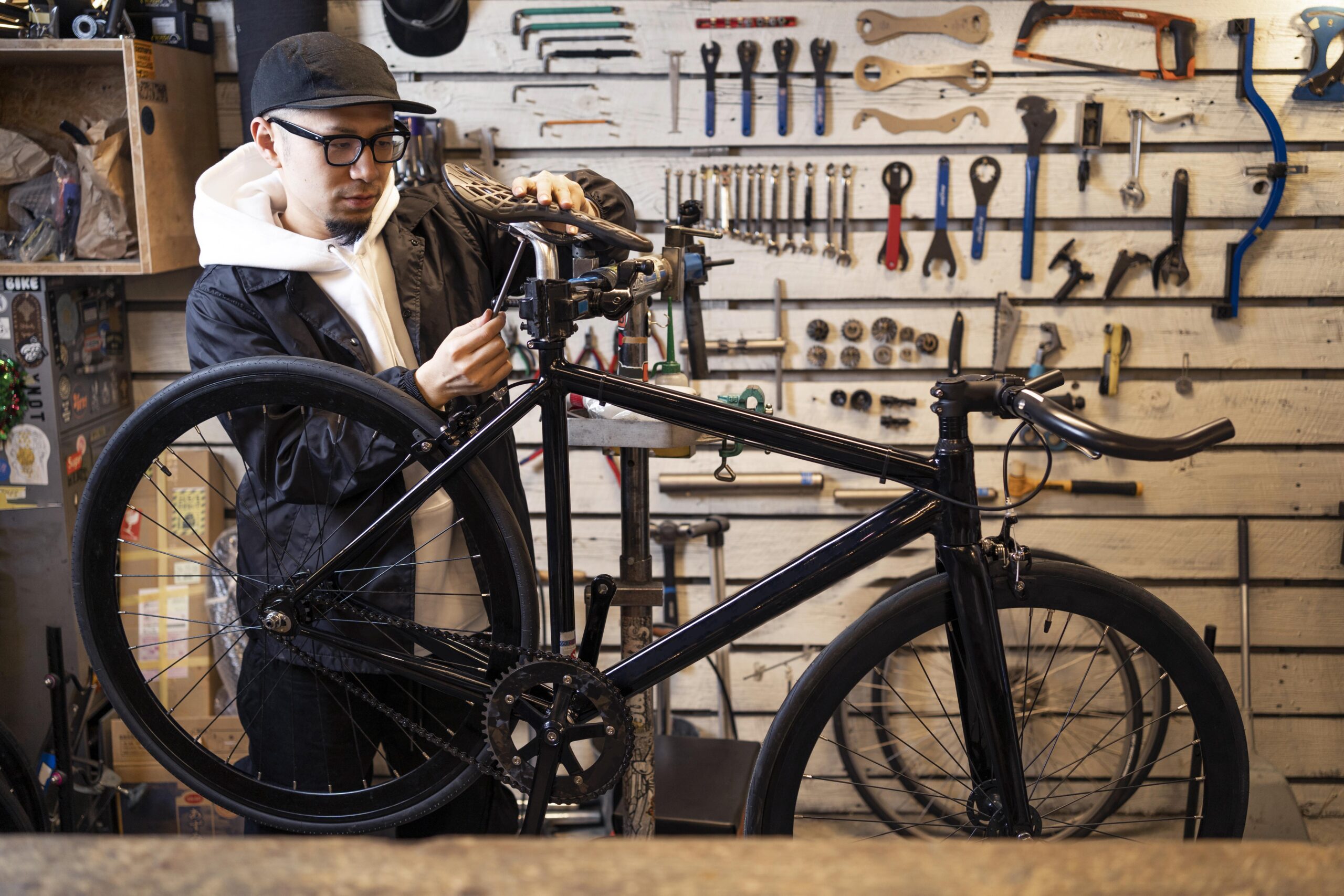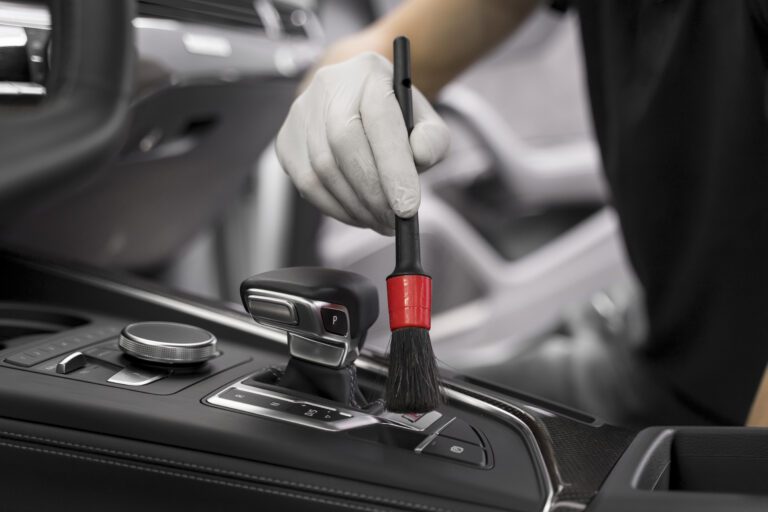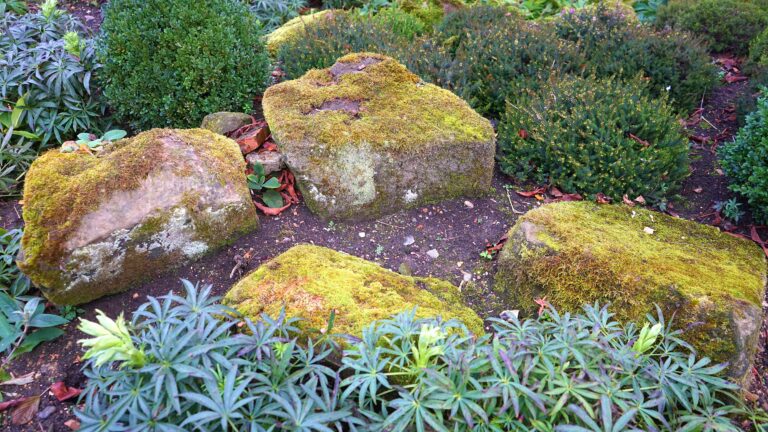
Reducing the Cost of DIY Bike Maintenance
If you’re a bike enthusiast, you’re no stranger to the joy of riding. The wind in your hair, the freedom of the open road, and the satisfaction of maintaining your own two-wheeled steed. However, as any cyclist will tell you, bike maintenance can sometimes put a dent in your wallet. We will cover basic tips to help you keep your trusty bike in top-notch shape without breaking the bank.
Why Bike Maintenance Matters
As you likely have before or now own your bike your must know that it’s important to note why taking care of your bike is crucial. Regular maintenance ensures your bike remains safe, reliable, and efficient. Neglecting your bicycle can lead to costly repairs down the road. Maintaining your bike isn’t just about saving money; it’s about safety and performance too.
Essential Tools for the Savvy Cyclist
When it comes to reducing the cost of DIY bike maintenance, one of the first steps is to equip yourself with the right tools. These essential tools will not only save you money but also empower you to take control of your bike’s upkeep. To get proper job done you must have each of these items:
1. Wrenches and Allen Keys
Your Bike’s Best Friends
Wrenches and Allen keys are like your bike’s best friends. They come in a variety of sizes and are indispensable for making adjustments to your bike’s components. Whether it’s tightening loose bolts, adjusting your brakes, or fine-tuning your handlebars, these tools have got you covered.
Pro Tip: Invest in a set of high-quality wrenches and Allen keys. They’ll last longer and make your maintenance tasks a breeze.
2. Tire Levers and Patch Kits
Your Puncture Repair Arsenal
Flat tires are an unfortunate reality of cycling. However, with the right tools, fixing a flat becomes a quick and cost-effective task. Tire levers are essential for removing the tire from the rim, and patch kits are your ticket to repairing punctured inner tubes.
Pro Tip: Learning to patch a tube can save you a lot of money in the long run. Keep a patch kit handy for on-the-road repairs.
3. Chain Lube
The Elixir of Smooth Riding
A well-lubricated chain is the key to smooth pedaling and a longer-lasting drive-train. Applying chain lube not only reduces friction but also prevents wear and tear on your bike’s most critical components.
Pro Tip: Don’t overdo it with the lube; a little goes a long way. Clean your chain before applying a fresh coat to maximize its effectiveness.
4. Cleaning Supplies
Shine and Protect
Regular cleaning is not just about aesthetics; it’s about protecting your bike from corrosion and premature wear. Invest in a basic cleaning kit that includes a gentle detergent, a soft brush, and ample water.
Pro Tip: Clean your bike after muddy or rainy rides to prevent dirt from settling and causing damage.
5. Tire Pump
Inflate for Performance
Maintaining the right tire pressure is crucial for a smooth and efficient ride. Riding with underinflated tires can lead to flats and reduced performance, while overinflated tires may result in a harsh ride.
Pro Tip: Invest in a floor pump with a pressure gauge for accurate inflation. Check your tire pressure regularly to ensure a comfortable and safe ride.
6. Cable Cutter
Precision Maintenance
Cables control various aspects of your bike, from shifting gears to operating brakes. Over time, cables can fray or become damaged. A cable cutter allows you to trim and replace these cables without fuss.
Pro Tip: Learning how to replace cables is a valuable skill that can save you money and keep your bike in peak condition.
DIY Maintenance: A Money-Saving Adventure
Now that you’re armed with the essential tools, it’s time to move to next step on a money-saving by learning the art of DIY bike maintenance. This isn’t just about saving money; it’s about gaining knowledge, developing hands-on skills, and fostering a deeper connection with your beloved bicycle. Let’s explore the key aspects of this exciting endeavor:
7. Regular Cleaning and Lubrication
Question: Why is cleaning and lubricating your bike important?
Answer: Regular cleaning and lubrication keep your bike running smoothly by preventing rust and wear. This simple step can extend the life of your components, reducing the need for costly replacements.
Delve Deeper: Cleaning your bike isn’t just about appearances; it’s about preserving its integrity. Dirt and grime can lead to accelerated wear and tear on critical components like the chain, cassette, and derailleurs. By cleaning your bike after each ride and applying appropriate lubricant, you’ll ensure that it continues to perform optimally.
Pro Tip: Use a gentle detergent or bike-specific cleaner, a soft brush, and plenty of water for thorough cleaning. Remember that excess lubricant can attract dirt, so apply it sparingly.
8. Learn Basic Repairs
Question: Why should you learn basic bike repairs?
Answer: Knowing how to fix common issues can save you money on repair shop bills. Learn how to fix a flat tire, adjust your brakes, and replace worn-out cables. There are plenty of online tutorials to guide you.
Delve Deeper: Basic bike repairs are not as daunting as they may seem. Learning to fix a flat tire, for instance, can save you the cost of a visit to the bike shop and get you back on the road in no time. Similarly, adjusting your brakes or replacing worn cables is a valuable skill that can prevent costly repairs.
Pro Tip: There are numerous online resources, videos, and forums where you can find step-by-step guides for various bike repairs. Start with the basics, and gradually build your repair skills.
9. Preventative Maintenance
Question: What is preventative maintenance?
Answer: It’s the art of fixing small issues before they become major problems. Regularly check your bike for loose bolts, misaligned components, and wear. A quick fix now can prevent a costly repair later.
Delve Deeper: Preventative maintenance is all about staying one step ahead of potential problems. Periodically inspect your bike for loose bolts, misaligned components, and signs of wear. Tightening a loose bolt or realigning a component is a minor task compared to repairing or replacing a major part.
Pro Tip: Create a checklist for your bike maintenance routine, including tasks like checking for loose bolts, ensuring proper tire pressure, and inspecting the drivetrain.
10. Buy Used Parts
Question: Is it wise to buy used bike parts?
Answer: Yes! Used parts in good condition can be a budget-friendly alternative to new components. Check local listings, online marketplaces, and bike shops for deals on quality used parts.
Delve Deeper: New bike components can be costly, but you don’t always need brand-new parts. Many cyclists sell their used but well-maintained components at a fraction of the price. Online marketplaces and local bike shops often have a selection of high-quality used parts that can save you money without compromising on quality.
Pro Tip: When buying used parts, inspect them carefully for signs of wear and damage. Ensure that they are compatible with your bike’s make and model.
11. DIY Tune-ups
Question: How can you perform a DIY bike tune-up?
Answer: An annual tune-up can keep your bike in top shape. Adjust brakes, gears, and check for any worn parts. By doing this yourself, you’ll save on labor costs and learn more about your bike’s mechanics.
Delve Deeper: An annual bike tune-up is like a spa day for your bicycle. It involves checking and adjusting various components to ensure your bike is in peak condition. By learning to do this yourself, you not only save money but also gain a deep understanding of your bike’s mechanics.
Pro Tip: Start with a thorough cleaning of your bike. Then, focus on adjusting brakes, gears, and checking for wear on parts like the chain and cassette.
Frequently Asked Questions
As you venture into the world of DIY bike maintenance, it’s natural to have questions. To help you on your journey, here are some frequently asked questions and their detailed answers:
1. Can I use any lubricant for my bike chain?
Answer: While it might be tempting to use any lubricant you have lying around, it’s best to use a dedicated bike chain lubricant. These lubes are designed specifically for the conditions your bike faces and will provide optimal performance. Using other lubricants may attract dirt and debris, causing more harm than good.
2. Is it necessary to replace the entire bike chain when it’s worn?
Answer: Not necessarily. When your bike chain is damaged you can often replace individual broken links. It is a more cost-effective solution than changing the entire drive train. Regularly measure your chain’s wear using a chain wear tool to know when it’s time for a replacement.
3. How often should I clean my bike?
Answer: Cleaning your bike is crucial for its longevity. After every muddy or rainy ride, it’s essential to give your bike a good clean. For routine cleaning, aim for once a month, but if you ride in adverse conditions frequently, cleaning more often will be beneficial.
4. Can I true my own wheels?
Answer: Truing wheels, or straightening them, can be a challenging task that requires practice and specialized tools like a truing stand and spoke wrench. While it’s possible to learn to true your wheels, it’s advisable to start with professional help. Once you gain more experience, you can explore this skill further.
5. What should I look for when buying used bike parts?
Answer: When buying used bike parts, always inspect them carefully. Look for signs of wear and damage, such as rust or dents. Ask the seller about the history of the part, including how it was used and if it has been well-maintained. Make sure the part is compatible with your bike’s make and model.
6. Are there any alternatives to chain lube?
Answer: In a pinch, you can use a light oil like sewing machine oil as an alternative to chain lube. However, it’s not the best long-term solution. Dedicated bike chain lubricants offer better performance and protection against wear and tear.
In the world of cycling, maintaining your bike is as important as enjoying the ride itself. By following these tips and tricks for reducing the cost of DIY bike maintenance, you can ensure your two-wheeled companion stays in great shape without draining your wallet. A well-maintained bike not only saves you money but also ensures a safe and enjoyable cycling experience.
Get out there, hop on your bike, and enjoy the open road. Your wallet will feel good, and so will your trusty bike.






